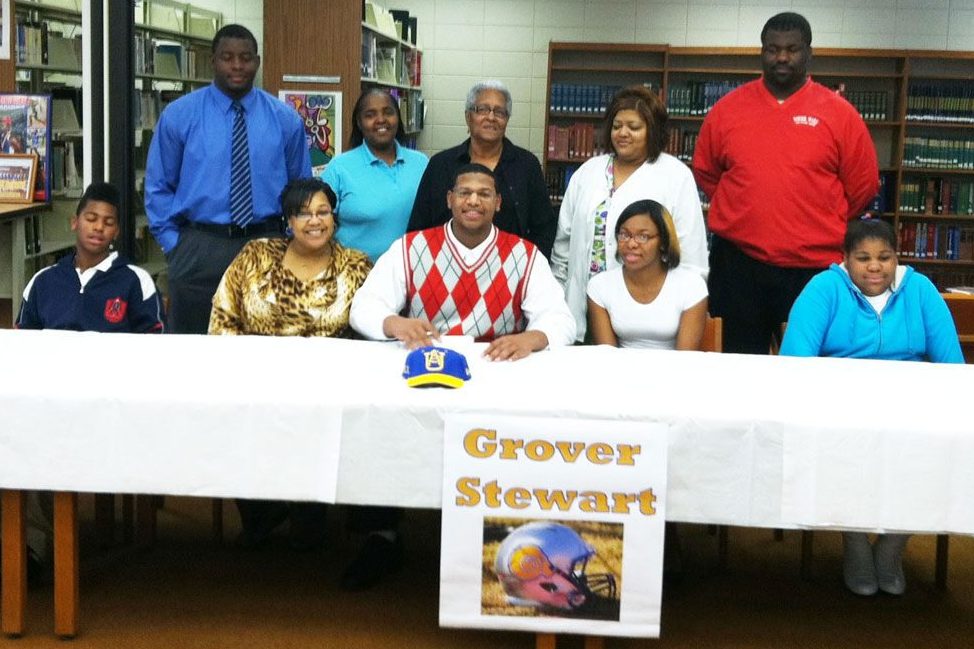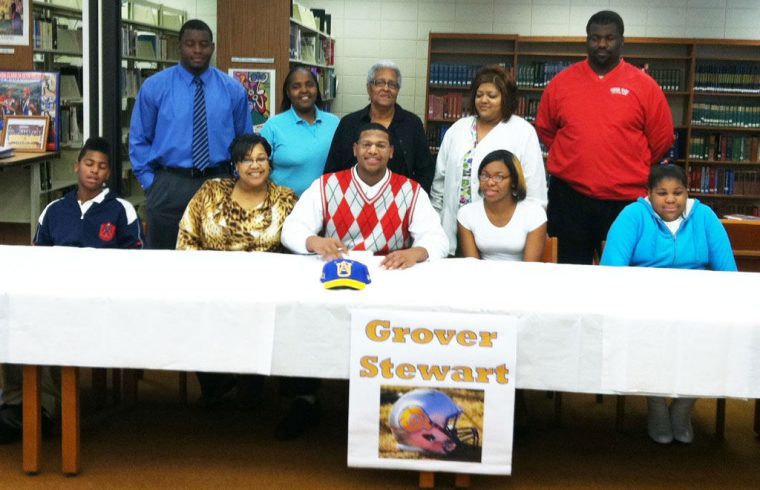The new version of NSD in December is being called the Early Signing Period, but the final Signing Day is still in February.

Albany Herald
The NCAA changed some of the rules earlier in the year, and one of those included adding an early signing period for recruits to sign their National Letters of Intent. This new three-day window is in addition to the traditional National Signing Day in early-February. The first early signing period under the new rule is Dec. 20-22.
How does the early signing period work?
Much like the traditional National Signing Day, beginning on Wednesday, Dec. 20 at 7 a.m. ET, high school recruits will have the opportunity to sign their National Letters of Intent and fax them into the school of their choice. (Yes, it’s 2017 and they are still using fax machines.) This signals the ultimate commitment to that program and will officially close their recruiting.
The NCAA wanted to allow some players and coaches to lock in signatures ahead of time, without every recruit needing to wait until February, perhaps cutting down on traditional NSD drama. College basketball and other sports already have early signing periods.
But in football’s first year with a mid-December signing period, there’s plenty of debate as to the timing, with
particular concern regarding how this will impact athletes
.
Those who have not made enough academic progress to qualify might not be able to sign early with their schools of choice and could see their spots go to less-talented players who are more certain to qualify.
Options could also be limited for prospects who are late bloomers.
Sometimes, prospects are not discovered until December or January, as programs review senior film. Under the old system, scholarships were not being filled en masse until February. With the new early date, the number of options for late bloomers could decrease.
Prospects who feel pressured to sign early could also lose out on offers from bigger schools, if they sign and foreclose the opportunity to wait for better options.
How many players are expected to sign early?
Many programs are expecting up to 80 percent of their incoming 2018 classes to sign during the early signing period. Some coaches told The GridIron Football Show’s Eric Tabor that this ultimately serves as a test to the strength of a prospect’s verbal commitment, with most who have already made pledges looking forward to putting pen to paper and making things official.
How is recruiting affected by the early signing period?
With a month less of time for schools to meet and talk to high school prospects, things are bit more rushed following the final regular season game of the year. While some coaches hit the recruiting trail right away, others were delayed a week with conference titles to compete for, and some programs didn’t have a coaching staff to send out anyway.
Some big programs either decided or were forced to undergo new coaching hires at season’s end, and it directly impacted the state of the 2018 recruiting class. Several incoming freshman decommitted from these programs in flux, and others have decided to wait until the traditional National Signing Day to make their final decision.
Teams in pre-Christmas bowl games are also at a disadvantage , having to navigate both preparing their teams for postseason play and trying to finalize things on the recruiting trail.
Which pledges might wait for National Signing Day?
There are a host of reasons that 2018 targets might wait until the traditional National Signing Day on Feb. 1 to sign on the dotted line. Not only are coaching changes a big factor, but some players might need time to take additional visits, while others might need time to be academically eligible for their top landing spots.
Having an Early Signing Period also gives players on the fence an opportunity to see how some of the classes fill at their top programs, to see which roster they might best fit with or succeed with.
It also might not be the players decision to wait. Coaches could ask prospects to hold off until early-February to ensure they still have a scholarship spot for them.

